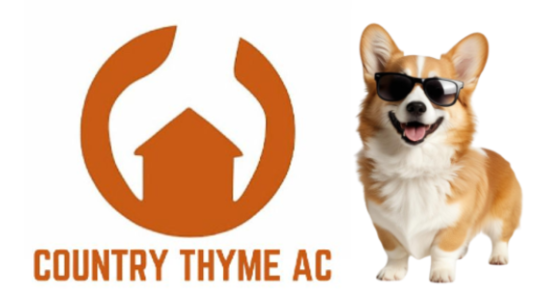
Ceiling fans are one of the most underrated ways to enhance comfort and reduce energy costs. By boosting air circulation and assisting your HVAC system, ceiling fans and energy efficiency are truly a perfect combination. They offer a cost-effective, eco-friendly way to stay cool while lessening strain on your AC—even preventing unnecessary air conditioning repair.
In this blog, the experts at Country Thyme AC & Home Services explain how ceiling fans can improve your comfort while lowering your energy use with higher HVAC efficiency. We'll also offer some HVAC efficiency tips that take advantage of ceiling fans.
Comfort vs. Temperature: Getting Comfortable with the Wind-Chill Effect Indoors
Ceiling fans don’t actually cool the air—they make your home more comfortable by blowing air across your skin. This is referred to as the wind-chill effect, and it can make a room feel up to 4 degrees cooler without adjusting the thermostat. That means you feel less hot and enjoy the benefits of indoor air circulation from your ceiling fan while using less AC—helping reduce your electric bill in summer.
The Best of Both: Why You Should Use Fans and Air Conditioning Together
There are several upsides to using ceiling fans and air conditioning together, especially when it's very hot outside. By using both, you increase HVAC efficiency and enjoy a cooler living space with less work from your cooling system.
Benefits of using ceiling fans and AC together:
- Ceiling fans help lower HVAC load by spreading cool air more evenly around the room. Limiting HVAC stress is important, because it can help you avoid a breakdown that may lead to premature AC or furnace installation.
- Using ceiling fans enhances comfort by getting rid of warm pockets and improving air movement.
- Pairing ceiling fans and AC can cut energy consumption. If you have a home automation system, you can even modify your smart thermostat settings to increase the temperature slightly while your ceiling fan is running.
Clockwise vs. Counterclockwise Ceiling Fan Rotation: Which Direction Should a Fan Spin?
To get the most out of your ceiling fans year-round, it’s important to ensure blades are rotating in the proper direction for the season. The direction impacts how air moves, which can either or gently recirculate warm air so you feel warmer.
When it's best to spin ceiling fans counterclockwise
In the summer, ceiling fans should turn counterclockwise at a faster setting. This creates a breeze that pushes cool air downward, enhancing the wind-chill effect and causing you to feel cooler.
When to spin ceiling fans clockwise
When it's cold out, set your fan to rotate clockwise on a gentle setting. This lifts cooler air and circulates heated air down to where you can feel it, making the space feel cozier without adjusting your thermostat.
How to Pick Out the Best Ceiling Fan for My Home
Choosing the right ceiling fan depends on a few critical considerations, including blade design, airflow rating and room dimensions. First, look for fans that have a good combination of ECFM airflow and blade pitch to ensure efficient air movement in your home:
- ECFM refers to how much air a fan pushes—the cubic feet per minute, or CFM—per watt of electricity it uses. Fans with higher ECFM are more energy efficient.
- Blade pitch is the tilt of the blades. A steeper blade pitch moves more air than a shallower pitch but can also strain the motor.
Also, consider room size when sizing a ceiling fan—a fan that’s too small won’t move as much air as you'd like, while one that’s too large may be disruptive in a smaller room.
Increase Your HVAC Efficiency With the Experts from Country Thyme AC & Home Services
At Country Thyme AC & Home Services, our HVAC specialists can help you stay comfortable while reducing strain on your heating and cooling systems. From efficient ceiling fan strategies and air conditioning installation to smart thermostats and furnace repair, we offer comprehensive solutions that fit your lifestyle. Reserve your appointment by calling 512-954-2223 today.
